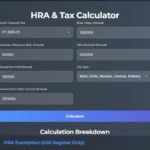Capital Gain Concept
Capital Gain Calculation
Opening Investment xxx
+ Purchase of Investment xxx
– Sales of Investment (xxx)
– Closing Investment (xxx)
Capital Gain xxx
Purchase of Investment Entry
Share of A Dr 100000
Share of B Dr 500000
Share of C Dr 50000
To Bank 650000
Sale of Investment Entry
Bank a/c Dr 250000
To Asset Realization a/c 250000
(Sold 2000 units of Share B)
Transfer of Purchase Cost
Apportion of purchase cost based on No of Units Sold
For Example 5000 Shares B Cost is $ 500000 then what will be the cost of 2000 Shares
(500000/5000) X 2000 =$ 200000
Transfer to Asset Realization
Asset Realization a/c Dr 200000
To Share B 200000
(Apportion of 2000-unit share cost)
In the Above Example, it results in Profit
Asset Realization a/c Dr 50000
To Capital Gain 50000
If it Results in Loss then
Capital Gain Dr XXXX
To Asset Realization XXXX
Income From Investment
Bank a/c Dr XXXX
To Dividend Income XXXX
To Distribution Income XXXX
To Share of Trust XXXX
Compare the Entry Passed by Book Keeper with Actual Entry
Then Pass Adjustment Entry
Note: Only Company Books will Maintain, No Books will maintain for individuals, so no need for Net Movement, directly start Doing Excel Work Sheet.
What is the Possible Mistake Book Keeper (BK) can make?
i. Sometimes for the entire Sales amount BK Pass Entry into Investment a/c so we need to reverse the entry and Transfer to the Asset Realization account
ii. Sometime sale of Investment, received to another Bank account or to Trust Bank account Then Pass Entry as Loan Receivable
Loan to X a/c Dr XXXX
To Asset Realization XXXX
| Trial Balance | CY | PY | Net Movement |
| Investment | 25000 | 5000 | 20000 |
| It means there is additional Investment made | |||
| Investment | 5000 | 25000 | 20000 |
| It Means there is some Investment sold | |||
Analysis of the Net Movement
So, we need to analyze each Debit and Credit
Closing Balance Summary needs to Match with Trail balance Investment a/c
- Book Keeping Maintain, Then Follow the above procedures
- Book Keeping Not Maintain, Straight Simple 🡺 Consider From ITR
From Investment 🡺 Book Keeping we get
- Investment
- Sales of Investment
- Further Purchase of investment
Be Careful while making investment entries check single Ledger maintain or Multiple Ledger Maintain.
If already Ledger account available then pass entry to the old ledger account instead of creating a new ledger
If No Ledger is available then create New Ledger for the Investment
How to deal with Capital Loss
- There is no difference between Long-Term Capital Loss & Short-Term Capital Loss
- If there is Capital Loss first Adjust with Short Term Capital Gain Balance Loss adjust with LTCG 🡺 Balance LTCG Eligible For 50% Deduction
Notes:
50% Discount on LTCG is only allowed for Individuals and Trust.
50% Discount on LTCG not allowed for Company,
For Example:
Reliance Share STC Loss $ 5000
TCS Shares Sold LTC Loss $ 10000
SBI Shares Sold STC Gain $ 6000
TATA Shares Sold LTC Gain $ 16000
Solution:
| Description | Amount |
| Reliance Share STC Loss | ($ 5000) |
| TCS Shares Sold LTC Loss | ($ 10000) |
| Total Loss (STCL + LTCL) | ($ 15000) |
| First Adjust with STCG | $ 6000 |
| Balance Loss Adjust with LTCG | $ 9000 |
| Remaining Balance in LTCG | $7000 |
| Balance LTCG can Claim a 50% Discount (only for Individual 50% Discount allowed) | $3500 |
In Case if Portfolio Statement is Given for the Client, then go by Portfolio Statement
From Portfolio Statement you can get
- Purchase of Share
- Sale of Share
- Capital Gain for the year
- Closing Share Value at Cost
- Dividend Income Received etc
If Portfolio Statement is not available, No proper data’s available then how to find Capital Gain
- First Identify the Share Name or Share Code From PY or From Prefill etc
- Then go to the delisted website to identify in which website share has been registered https://www.delisted.com.au/
- Now Type the Share Name or Share Code in Delisted website and select share Icon, Now the company name will display
- Select the correct company in the list
- Under Shareholders Link Section Select Registry Website Link
- Now it will take you to the Registry website
- Search for Single Holding Login Use HIN Number, Post Code Company Name, and Company code to log in
- To get Holder Identification Number (HIN) search in PY File or Portfolio Statement, or Share statement
After Login what Details do you need to Retrieve from that website
- Transaction History To Identify
- How many units still holding.
- How many units are purchased and Sold?
- Date of Purchase and Sold
- Payment History (Dividend Related Details, SPP)
- Dividend Received
- Amount of Dividend, Date of Dividend received
- Dividend Reinvestment Plan (DRP) etc
SPP – Share Purchase Plan
A Share Purchase Plan (SPP) it’s a form of capital raising by the company that offers existing shareholders to buy a new additional share at a discounted price.
To find SPP Buy Value
- Go to the ASX Announcements Website using the below Link
- https://www.asx.com.au/asx/v2/statistics/announcements.do
- Type the Share code
- Select the year (The year when SPP is happening you can get these details on Transaction History)
- Now select Search
- Now Scroll and Go to the SPP Announcement Date (SPP date you can get from Transaction History)
- Now Download the Pdf which Contains the Name SPP on the Particular Date
- In that PDF you can able to get Buy Value for SPP Per Share
- Cost of Share = SPP Per Share X No of Units Purchase using SPP
- SPP Per Share (gets from ASX Announcement website)
- No of Units Purchase using SPP (Get From Transaction history from Registry Website)
Dividend Reinvestment Plan (DRP)
Dividend Reinvestment Plan means Dividend issued by a company directly Converted into Share that also consider as Dividend Income as well at the Time of Selling share DRP consider as purchase Cost
If Share Acquired using DRP Plan then Three Things need to be considered
| Dividend Income For DRP | Get From DRP Statement which is available on Registry Website |
| Cost of Share | |
| Date of Purchase |
With the above information plus Bank Statement, you can Prepare Capital Gain Income and Dividend Received Income
Capital Gain for Sale of Rental Property
| Cost of Sales | |
| Particulars | Amount |
| Capital Proceed Calculation | |
| Sales Consideration | xxx |
| Less: | |
| Repairs to be completed for Sales | (xx) |
| Settlement Cost | (xx) |
| Advertisement Expenses | (xx) |
| Legal Expenses | (xx) |
| Other incidental Costs (Specify) | (xx) |
| Net Sales Value | xxx |
| Cost of Purchase | |
| Particulars | Amount |
| Cost of Acquisition | xxx |
| Add: | |
| Stamp Duty paid | xx |
| Other incidental Cost | xx |
| Cost of Improvements | xx |
| Closing WDV of Capital Assets added in software | xx |
| Other Capital Assets (Specify) | xx |
| Less: | |
| Capital allowance deduction claimed till the date of sale | (xx) |
| Other (Specify) | (xx) |
| Total Purchase Cost | xxx |
| Long-Term Capital Gain | Short-Term Capital Gain | ||
| Net Sale Value | xxx | Net Sale Value | xxx |
| (-) Total Purchase Cost | (xx) | (-) Total Purchase Cost | (xx) |
| Capital Gain | xxx | Capital Gain | xxx |
| (-)50% Discount on Capital Gain | (xx) | No Discount allowed | |
| Taxable Capital Gain | xxx | Taxable Capital Gain | xxx |
Share of Taxable Capital Gain = Taxable Capital Gain X % of Ownership
Notes:
- You cannot deduct a capital loss from your assessable income
- Sale of Immovable Property wants to consider contract date not settlement date.
- Sale of Resident property is Exempted from Tax
- 50% Discount on LTCG is only allowed for Individuals.
- 50% Discount on LTCG not allowed for Company, and Trust.










